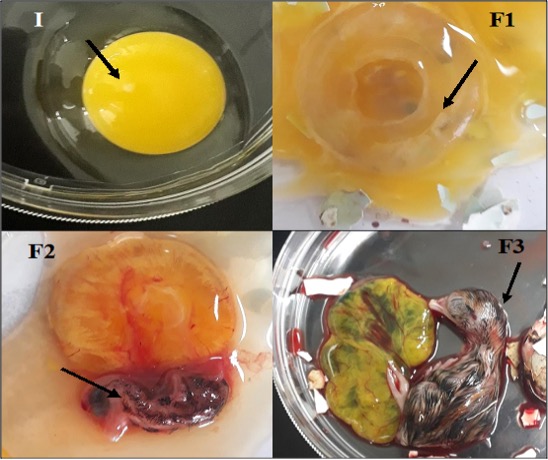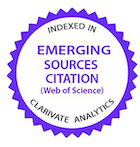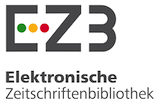Performance and proposal of reproductive management in European quails
DOI:
https://doi.org/10.1590/1809-6891v26e-79610EAbstract
The objective of this study was to verify posture, fertility, and embryonic viability depending on the time and frequency use of the male for reproduction, as well as evaluate sperm storage time in the female after copulation in European quails. For this, 180 males were used (18 males mated with 10 females each). The experimental design was completely randomized in a 2x10 factorial scheme, with two genetic lineages and ten days of use for couples, with 14 replications. Males remained in copulation for ten consecutive days, mating each day with a different female. Information on egg laying, embryonic viability, and egg fertility was collected daily for fourteen days after copulation. The time males remained in copulation did not alter the egg fertility. In females, the presence and possible stress caused by males did not change the laying rates and eggs’ embryonic viability. The fertility rate was higher than 70% only three to five days after copulation, not achieving the same performance on other days. Based on these observations, a more efficient reproductive management proposal for large populations may be implemented using three females for each male on alternate days, with egg collection starting on the third day after the first copulation, with the necessity of another copulation every three days per female, considering the mating period of 10 consecutive days. For smaller breeding stocks, the ratio of two females for one male may be used as an alternative, considering a rest day for the male.
Downloads
References
Miranda JLPS, Xavier PR, Mahecha GAB, Marques Júnior AP. Período de permanência de espermatozoides em glândulas hospedeiras de espermatozoides e glândulas infundibulares em codorna de corte. Arquivo Brasileiro de Medicina Veterinária e Zootecnia. 2013;65(1):19–28. https://doi.org/10.1590/s0102-09352013000100004.
Ipek A, Sahan U, Yilmaz B. The effect of live weight, male to female ratio and breeder age on reproduction performance in Japanese quails (Coturnix coturnix japonica). South African Journal of Animal Science. 2004;34(2):130-134. Available at: http://www.scielo.org.za/scielo.php?script=sci_arttext&pid=S0375-15892004000200010&lng=en
El-Alamy MA, Foote RH, Hare E. Sperm output and hormone concentrations in finn and dorset rams exposed to long- and short-day lighting. Theriogenology. 2001;56(5):839-854. https://doi.org/10.1016/s0093-691x(01)00612-4.
Frangez R, Gider T, Kosec M. Frequency of boar ejaculate collection and its influence on semen quality, pregnancy rate and litter size. Acta Veterinaria Brno. 2005;74(2):265-273.
https://doi.org/10.2754/avb200574020265
Rashid MM, Hoque MA, Huque KS, Bhuiyan AKFH. Effect of semen collection frequency and scrotal circumference on semen quality parameters in Brahman x local crossbred bulls. Advances in Animal and Veterinary Sciences. 2015;3(12):677–684. https://doi.org/10.14737/journal.aavs/2015/3.12.677.684.
Breda FC, Euclydes RF, Pereira CS, Torres RA, Carneiro PLS, Sarmento J L R, Torres Filho RA, Moita AKF. Endogamia e limite de seleção em populações selecionadas obtidas por simulação. Revista Brasileira de Zootecnia. 2004;33(6):2017-2025. https://doi.org/10.1590/S1516-35982004000800013
Froman DP, Kirby JD, Proudman JA. Reprodução em aves: Macho e fêmea, In: Hafez B. & Hafez E.S.E. (Eds), Reprodução Animal. 7ª ed. Barueri: Manole; 2004. p.237-257.
Wentworth BC, Mellen WJ. Egg production and fertility following various methods of insemination in japanese quail (Coturnix coturnix japonica). Reproduction. 1963;6(2):215–220. https://doi.org/10.1530/jrf.0.0060215.
Franca LR, Avelar GF, Almeida FF. Spermatogenesis and sperm transit through the epididymis in mammals with emphasis on pigs. Theriogenology. 2005;63(2):300-318, 2005. https://doi.org/10.1016/j.theriogenology.2004.09.014
Arruda RP, Celeghini ECG, Garcia AR, Santos GC, Leite TG, Oliveira LZ, Lançoni R, Rodrigues MP. Morfologia espermática de touros: interpretação e impacto na fertilidade. Revista Brasileira de Reprodução Animal. 2015;39(1):47-60. Available at: http://www.cbra.org.br/pages/publicacoes/rbra/v39n1/pag47-60%20(RB572).pdf
Botha AE, Schulman ML, Birrell J, du Plessis L, Laver PN, Soley J, Colenbrander B, Bertschinger HJ, Effects of an anti-gonadoliberin releasing hormone vaccine on testicular, epididymal and spermatogenic development in the horse. Reprodcution in Domestic Animais. 2022;57(8):919-927. https://doi.org/10.1111/rda.14141
Abuoghaba AA, Ali F, Selim DA, Abdelwahab AA, Abdelfattah MG. Impact of male-female cohabitation period on behavioral aspects, fertility, hatchability, and hormonal estimates of japanese quail. Poultry Science. 2022;101(1): 101530. https://doi.org/10.1016/j.psj.2021.101530
Wechsler B, Schmid I. Aggressive pecking by males in breeding groups of Japanese quail (Coturnix japonica). British Poultry Science. 1998;39(3):333–339. https://doi.org/10.1080/00071669888863
Akhtar MF, Ma Q, Li Y, Chai W, Zhang Z, Li L, Wang C. Effect of sperm cryopreservation in farm animals using nanotechnology. Animals.2022;12(17):2277. https://doi.org/10.3390/ani12172277
Bakst MR. Anatomical basis of sperm-storage in the avian oviduct. L Scanning Microscopy 1987; 1(3):1257-1266. Available at: https://pubmed.ncbi.nlm.nih.gov/3659862/
Yang GE, Li S, Zhao Q, Chu J, Zhou B, Fan S, Shi F, Wei X, Hu X, Zheng X, Liu Z, Zhou X, Tao Y, Li S. Transcriptomic and metabolomic insights into the variety of sperm storage in oviduct of egg layers. Poultry Science. 2021;100(6):101087. https://doi.org/10.1016/j.psj.2021.101087
Reis LH, Gama LT, Soares MC. Effects of short storage conditions and broiler breeder age on hatchability, hatching time, and chick weights. Poultry Science. 1997;76(11):1459–1466. https://doi.org/10.1093/ps/76.11.1459

Published
How to Cite
Issue
Section
License
Copyright (c) 2025 Brazilian Animal Science/ Ciência Animal Brasileira

This work is licensed under a Creative Commons Attribution 4.0 International License.
Authors who publish with this journal agree to the following terms:
- Authors retain copyright and grant the journal right of first publication with the work simultaneously licensed under a Creative Commons Attribution License that allows others to share the work with an acknowledgement of the work's authorship and initial publication in this journal.
- Authors are able to enter into separate, additional contractual arrangements for the non-exclusive distribution of the journal's published version of the work (e.g., post it to an institutional repository or publish it in a book), with an acknowledgement of its initial publication in this journal.
- Authors are permitted and encouraged to post their work online (e.g. in institutional repositories or on their website) prior to and during the submission process, as it can lead to productive exchanges, as well as earlier and greater citation of published work (See The Effect of Open Access).
Data statement
-
The research data is available on demand, condition justified in the manuscript































